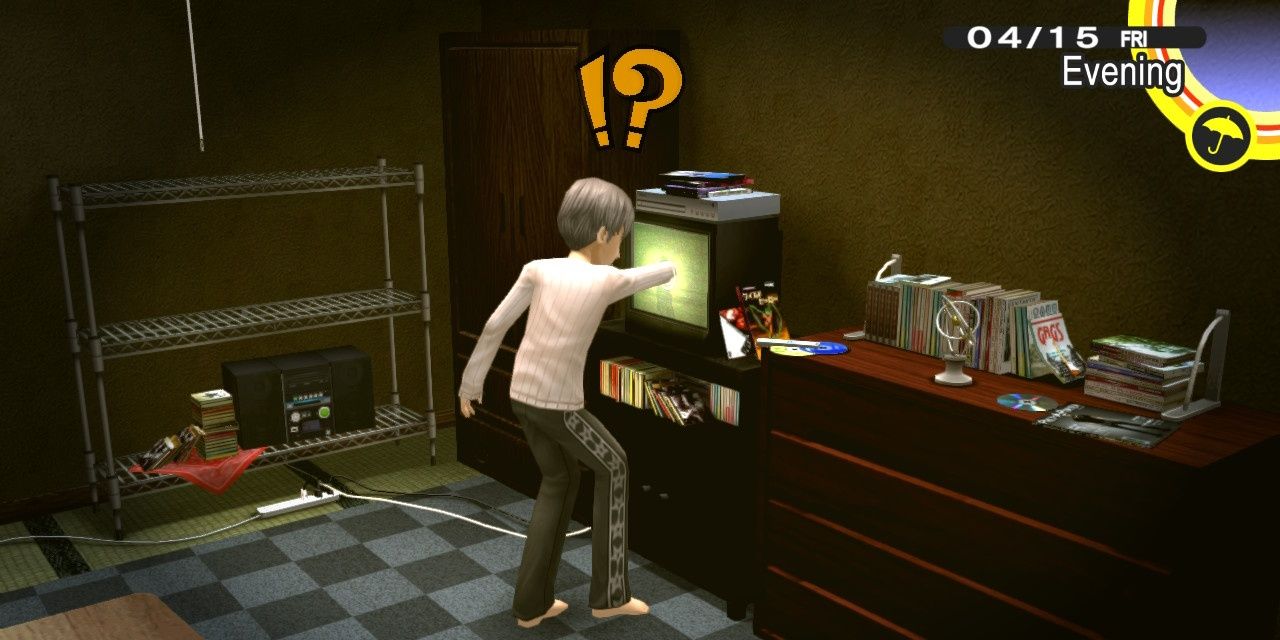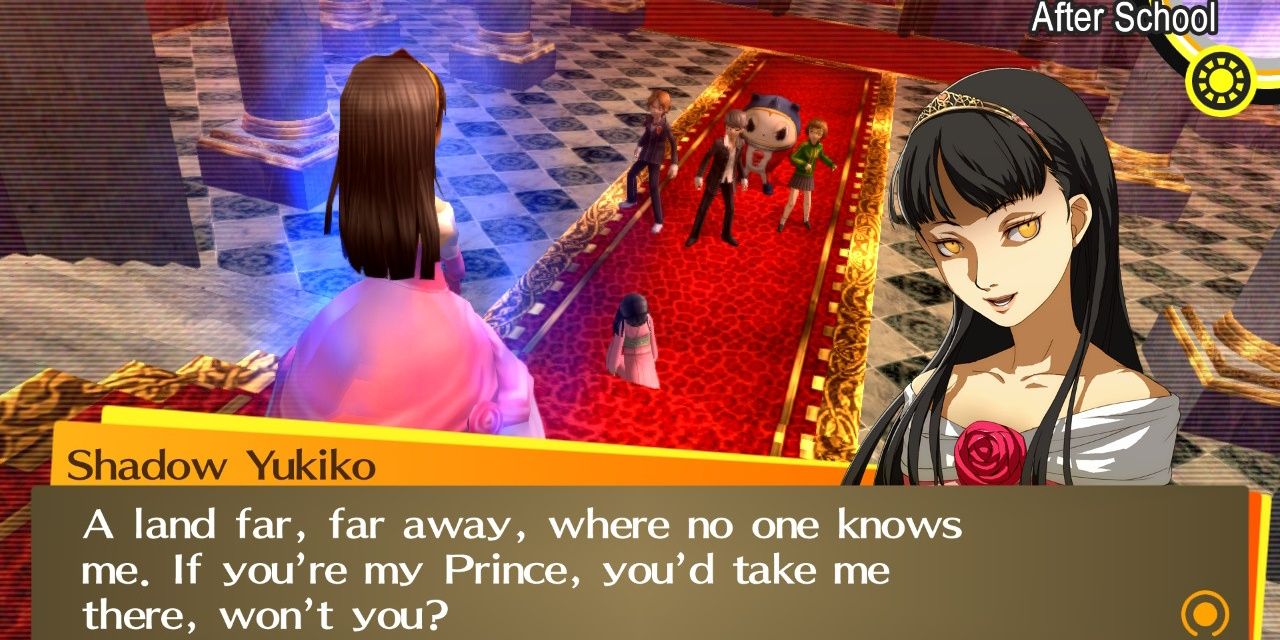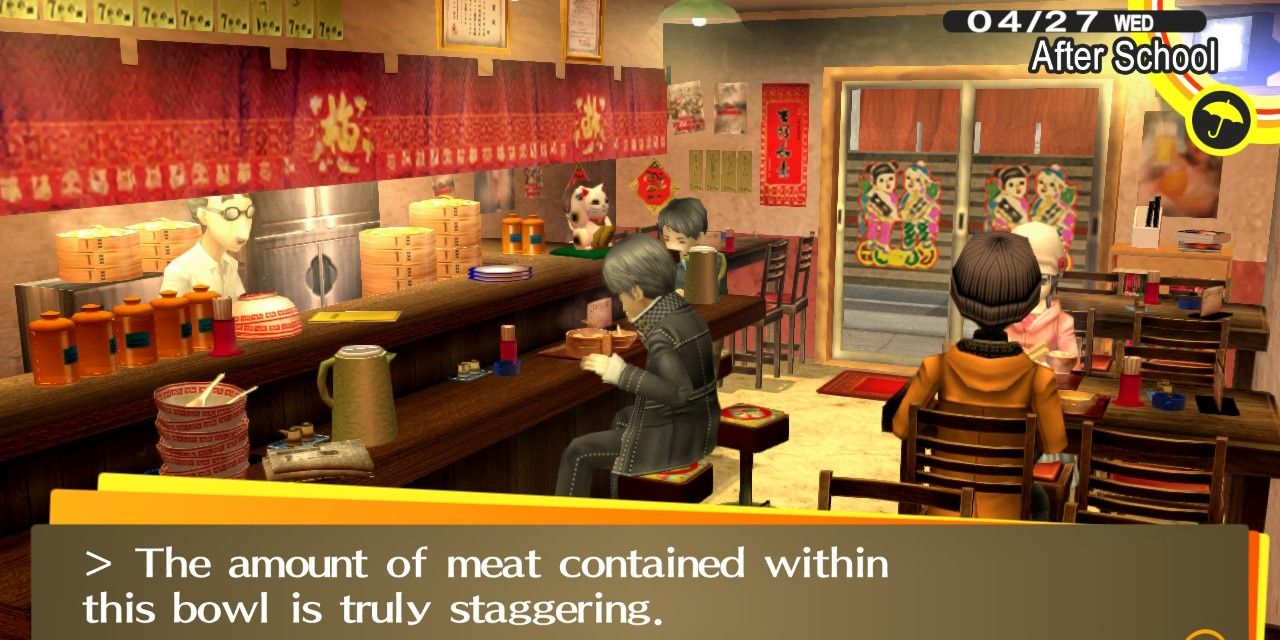Persona 4 Golden Review: Close to JRPG Perfection
Persona 4 Golden
Persona 4 Golden is a radiant experience that not only builds upon, but perfects the best elements in the series.
- Platform
- PC, PS Vita
- Developer
- Atlus
- Publisher
- Atlus
- Genre
- JRPG
- Satisfying side quests
- Beautiful graphics
- Engaging sim mechanics
- Challenging boss fights
- Over-complicated dungeon crawling
reviewing the excellent Persona 3 Portable, I thought I’d met my JRPG quota for some time. It was beautiful, fun, moving and involved an array of delicious Japanese foods. I mean, how could you top that gem? I’ll tell you how: Persona 4 Golden.
It’s as if Studio Atlas took everything good about Persona 3 and ramped it up to 11: all the forged relationships, city hopping, mini-tasks and fine dining. The timely re-release of Persona 4 Golden on multiple consoles gives this innovative and incredibly enjoyable addition to the Persona series an additional shot in the arm. From the get-go, this is a different Persona. Instead of a linear good vs evil plot against Tartarus-dwelling Shadows, the game is a slow-burning murder mystery turned dungeon-crawling RPG with an abundance of slice-of-life situations. And, in all honesty, I was sad when it was over.
The game opens in the little rural town of Inaba, Japan, where there is more going on than first meets the eye (speaking of ‘eye,’ the graphics are as vivid as a new technicolor TV set, while the cut scenes and anime sequences still retain their luster). Like Persona 3, you play as a high-school transfer student, but that’s where the plot similarities end. You’re staying in the upstairs bedroom in the house of your hard-boiled detective Uncle Ryotaro and his daughter Nanako. Soon after, you discover the Midnight Channel, a TV show that comes on at rainy evenings at midnight, seemingly sucking Inaba locals out of reality and into its strange surreal TV world.
The plot thickens like a classic noir novel (but, y’know, with Personas instead of Colt Revolvers). A local killer is knocking off Inaba’s citizens, and shoving others (mainly insecure students) into a magical TV surreal world where the unstable parts of their personalities manifest into Persona bosses. But before you get into that juicy turn-based gameplay, you have to navigate through various dungeons that specifically correspond to the trials and inner turmoils of those who were taken.
Let’s dive into those dungeons for a minute, which constitute 50% of the game. Previously, I’d almost fallen asleep in Persona 3 Portable’s winding and never-ending Tartarus, but P4G’s kept me riveted. Instead of a massive maze-like tower, the dungeons are completely original and reflective of the individuals involved. For example, fellow classmate/fellow warrior Yukiko Amagi is a shy, apprehensive girl who’s had to take over her family’s local inn, but in TV world, she’s an unhinged boy-crazy wild-child. The dungeon takes on a personification of her desire to escape with a prince and transforms into a winding fortress full of Shadows and chests full of goodies.
Gun to head, pretty much my only critique of the game is once again aimed at the dungeons, but not due to their monotony this time. Throughout my exploration of each dungeon’s 8-11 floors, there were several moments when I wasn’t allowed to progress through a certain door or point on the map until I had found the right key, or fought a particular Shadow, but that key/Shadow/missing element could be on a lower floor I’d already come from, which meant that I had to double back multiple times while getting tripped up by Shadows I’d escaped from previously. Some dungeons, like the strip club and Heaven, are easier to navigate and slightly more enjoyable due to their aesthetic nature, but others like Yukiko’s Castle and the bathhouse were kind a slog to get through mainly due to being “tricky.” However, once I got past the dungeon, it was on.
Unlike in Persona 3, the combat kept me glued to the action, focusing on the boss’ weaknesses and taking control of the team’s skills. It was nice to see Shuffle Time back in play after every Shadow fight, with some added improvements. You’re given four face-up cards with a range of options like weapons, increased skill upgrades and, by far the most crucial, Persona cards, which, by the way, can only be obtained during a Shuffle Time session. This is a double-edged sword as obtaining a new Persona can occasionally force you to replace one you already have, (maybe even the one you want to keep).
Time is constantly at work, which means you have to plan your daily—and nightly—activities carefully. This is crucial if you want to get the good ending, but also to explore the wonderful world of Inaba. It’s truly amazing what this small town has to offer, which is what I imagine may have been in the back of the genius minds at Atlas from the start. There’s a thread of quaintness that runs through the game: from the imposing presence of Junes massive retail shop, to the mom-and-pop stores that line downtown Inaba. Even the relationships of those you meet seem more tightly woven than what a big city could offer.
For instance, I took great pleasure in picking up a side-job as an Assistant Daycare Caretaker for extra cash. Each Monday, Friday and Saturday, I took the bus to watch after some kids, and sure enough, established a connection and unlocked the touching backstory of Eri Minami, mother to Yuuta, one of my kiddos. Even the seemingly trivial ema (wishes/prayer) quests I completed at the shrine were a beautiful touch. By committing random acts of kindness, like passing on a love letter, or helping a family find their dog, I created not just lasting connections, but it made me want to try out a few within my own real-life social sphere—minus the help of the adorable fox deity, unfortunately. But the small-town feel didn’t stop with relationships. Inaba itself seems to be the essence of the Japanese inaka, or Japanese countryside, with all of its charm and homey vibe. This is perhaps my favorite aspect of the game.
Just like Persona 3, you’re given free rein to cruise through the different areas of the city, but this time, you’ve got legs. My guy was able to manually run around Inaba’s shopping district and take advantage of every establishment, as well as interact with all the passersby. A few shops offer up entirely new experiences, like Yomenaido Bookstore where you can buy and read books that boost Courage and Understanding skills (I haven’t read this many books this fast since college), and old stand-by spots to make weapons, like Daidara Metalworks, where you can not only upgrade your armory, but also sell back what you’re not using, as well as craft items from parts you pick up in the dungeons.
But by far, the best place to hang was the Chinese restaurant “Ai Ya”, which, when translated in Japanese (愛屋), means “Love Shop.” It’s there that I happily gobbled down bowl after plate of tongue-numbing delicacies, eventually making it one of my main haunts during the game (for my own food-obsessed purposes). And also because I really wanted to beat the Rainy Day Mega Beef Bowl Challenge.
There’s a quaintness that runs through the game: from the imposing presence of Junes retail shop, to the mom-and-pop stores that line downtown Inaba.
Throughout the twists and turns of the game, I felt myself getting more and more involved. Not only did the bosses require focus and team discipline, but the story itself couldn’t progress without keeping your cool and ascertaining who the correct killer was. In addition to the numerous fun-filled “other” activities, like planting a tomato garden with Nanako, or learning bike tricks on your scooter, it was a blast from start to finish. Naturally, romance plays a part, but at least in P4G, if you plan have multiple relationships, there’s some guilt involved, unlike its predecessor.
While P4G takes its time getting to the real meat of the game (about two hours of gameplay before your first battle), it’s so well-designed that you won’t feel like rushing into fights. Like a small town, the plot unfolds itself in due time and before too long, I’d gotten quite used to life in Inaba. By the end of the game, I knew every face, every spot and could teach you which bait was the best to properly catch a fish in the Samegawa Flood Plain. Yes, ultimately the mystery was solved and yes, good prevailed, but I would’ve loved to linger in Persona 4 Golden just a bit longer, at least until the fog had cleared and life got back to its beautiful banal hum.
It was such a joy to just spend time in Inaba, that it’s got me dreaming of Atlas one day putting out a Persona in which you just simply exist. In my good buddy Yosuke Hanamura’s words: “Days like today… days when I did nothing. They’re all important days.”






